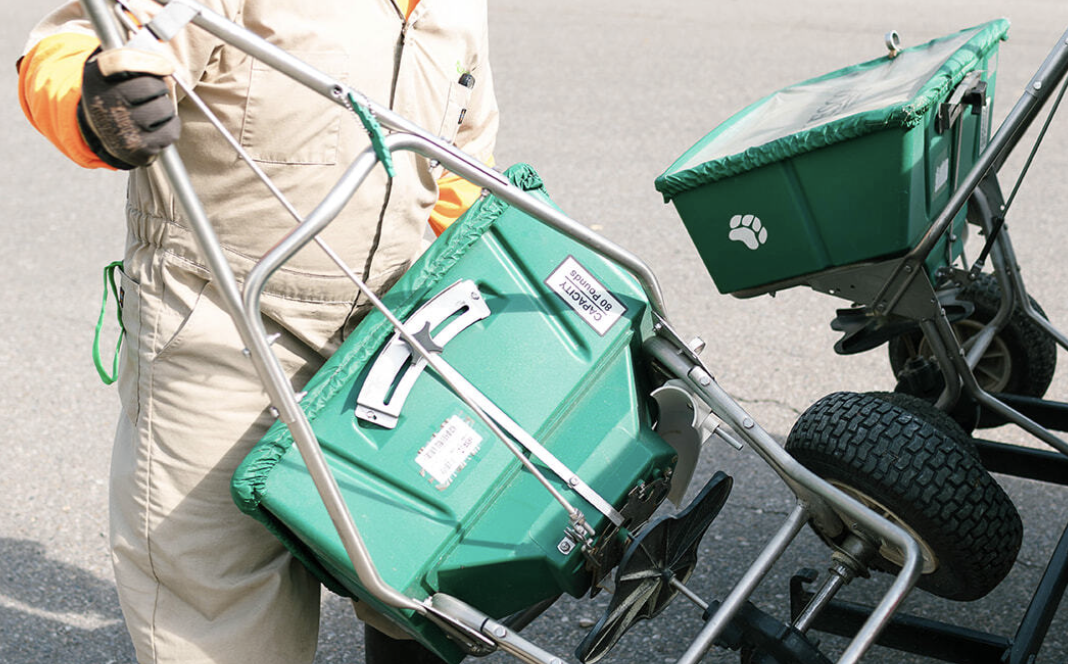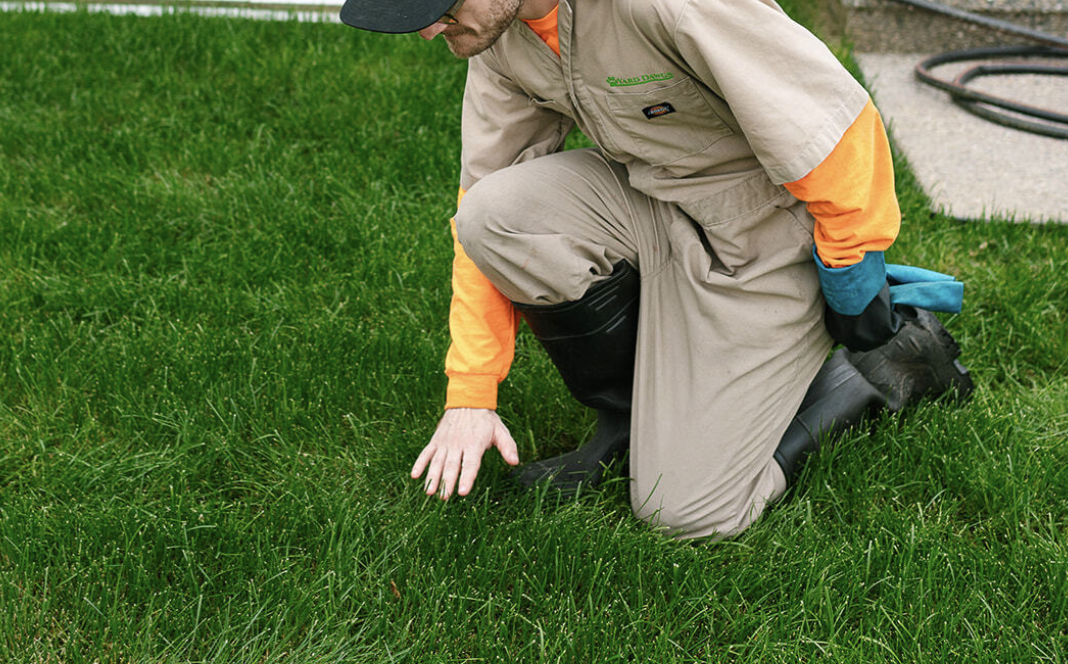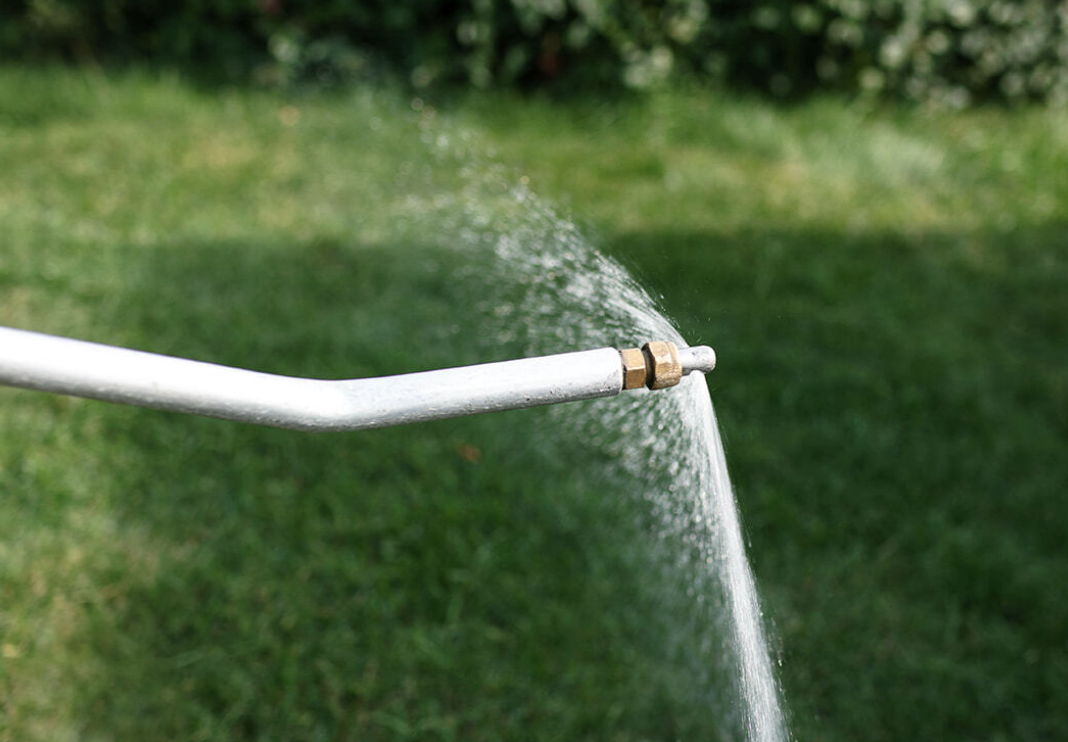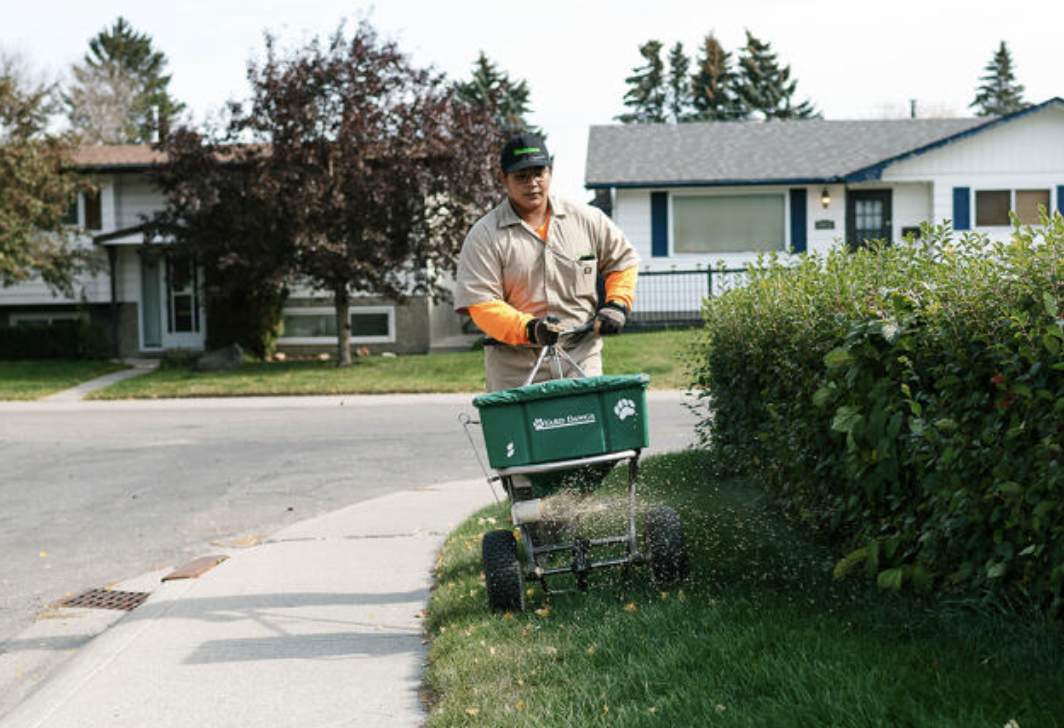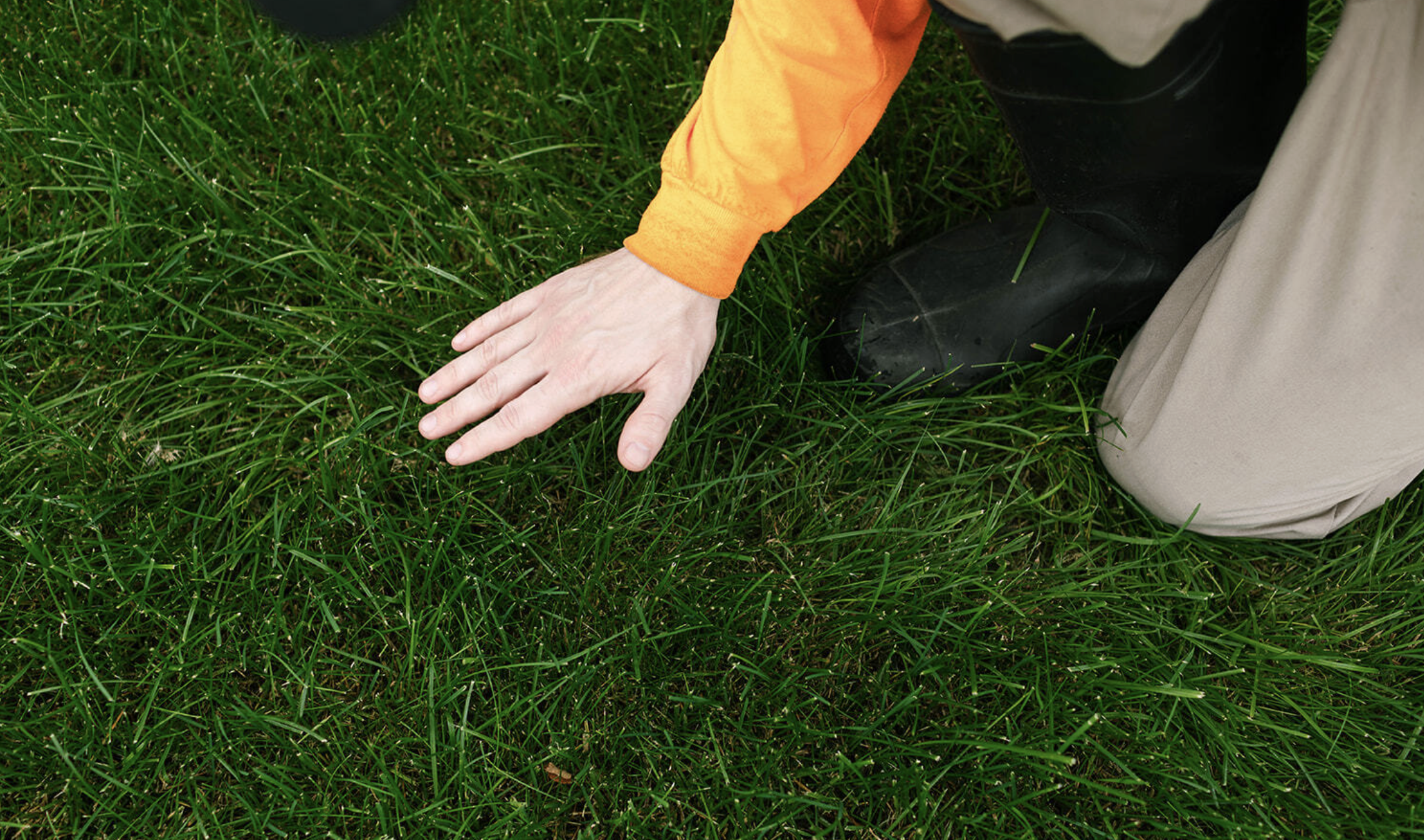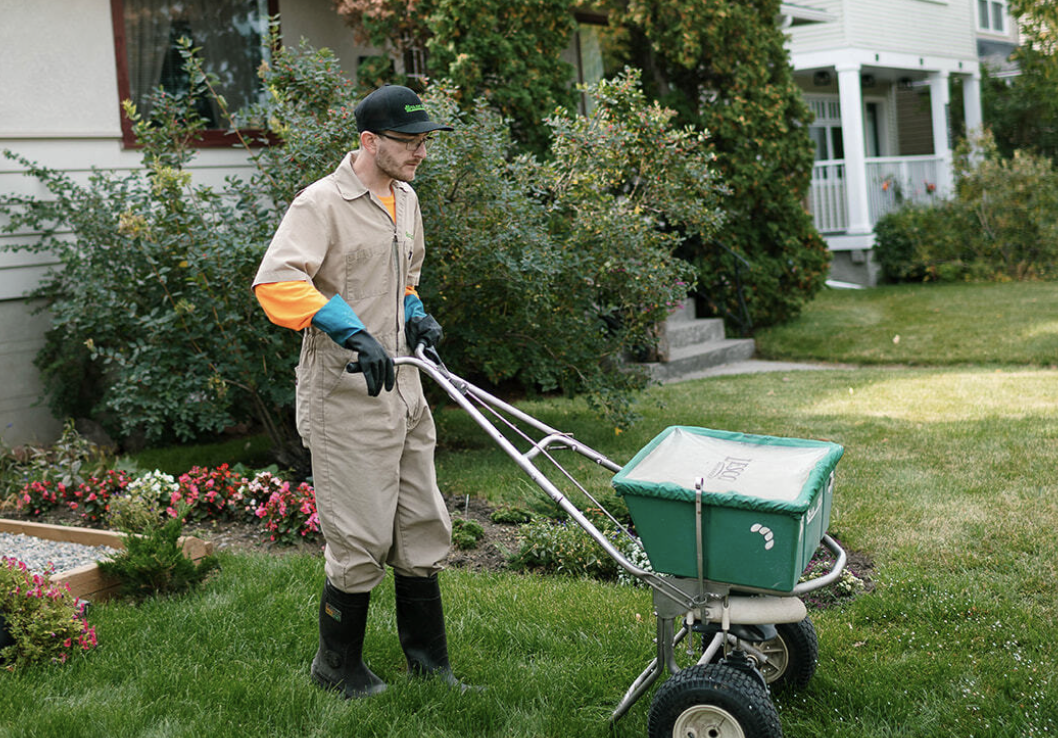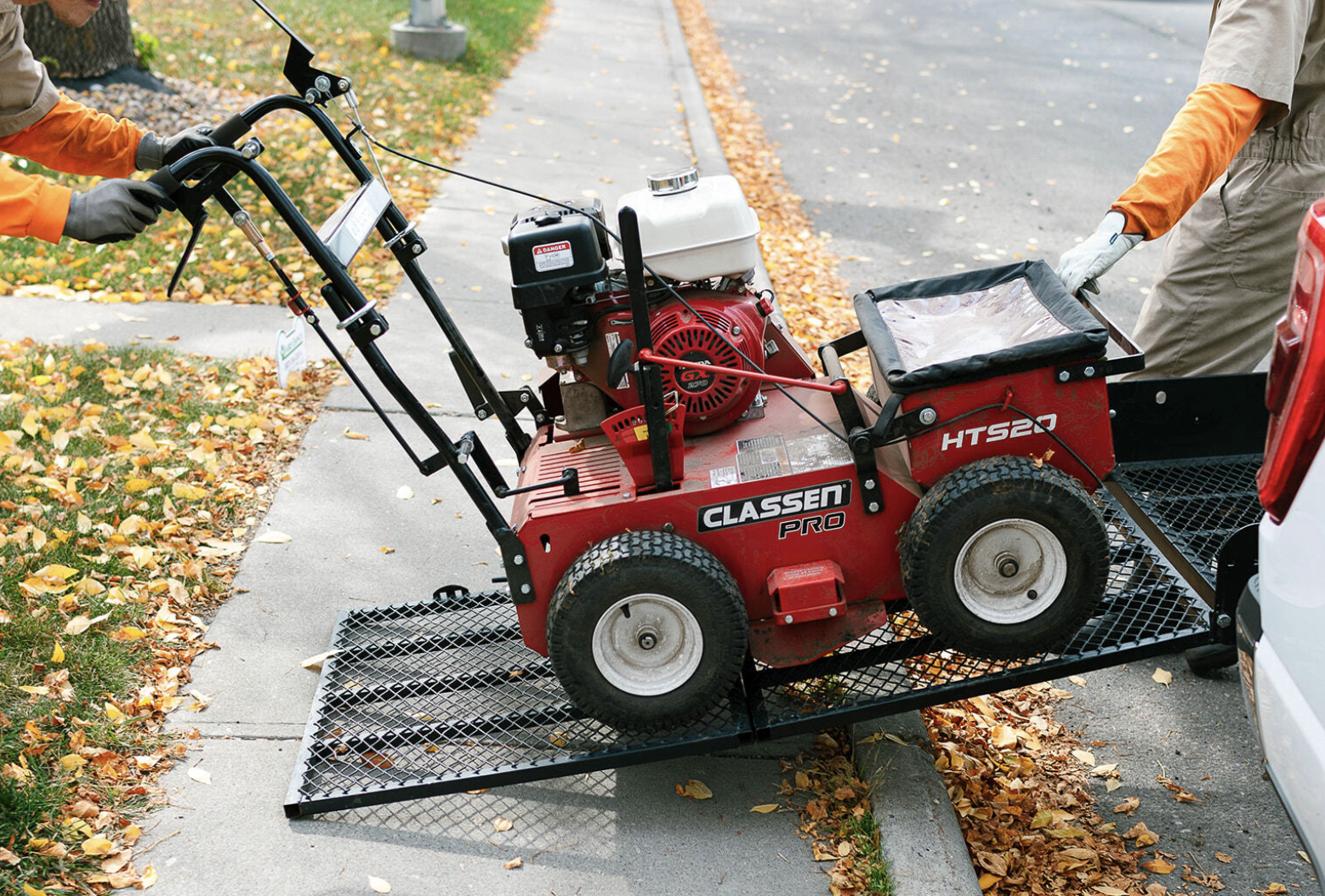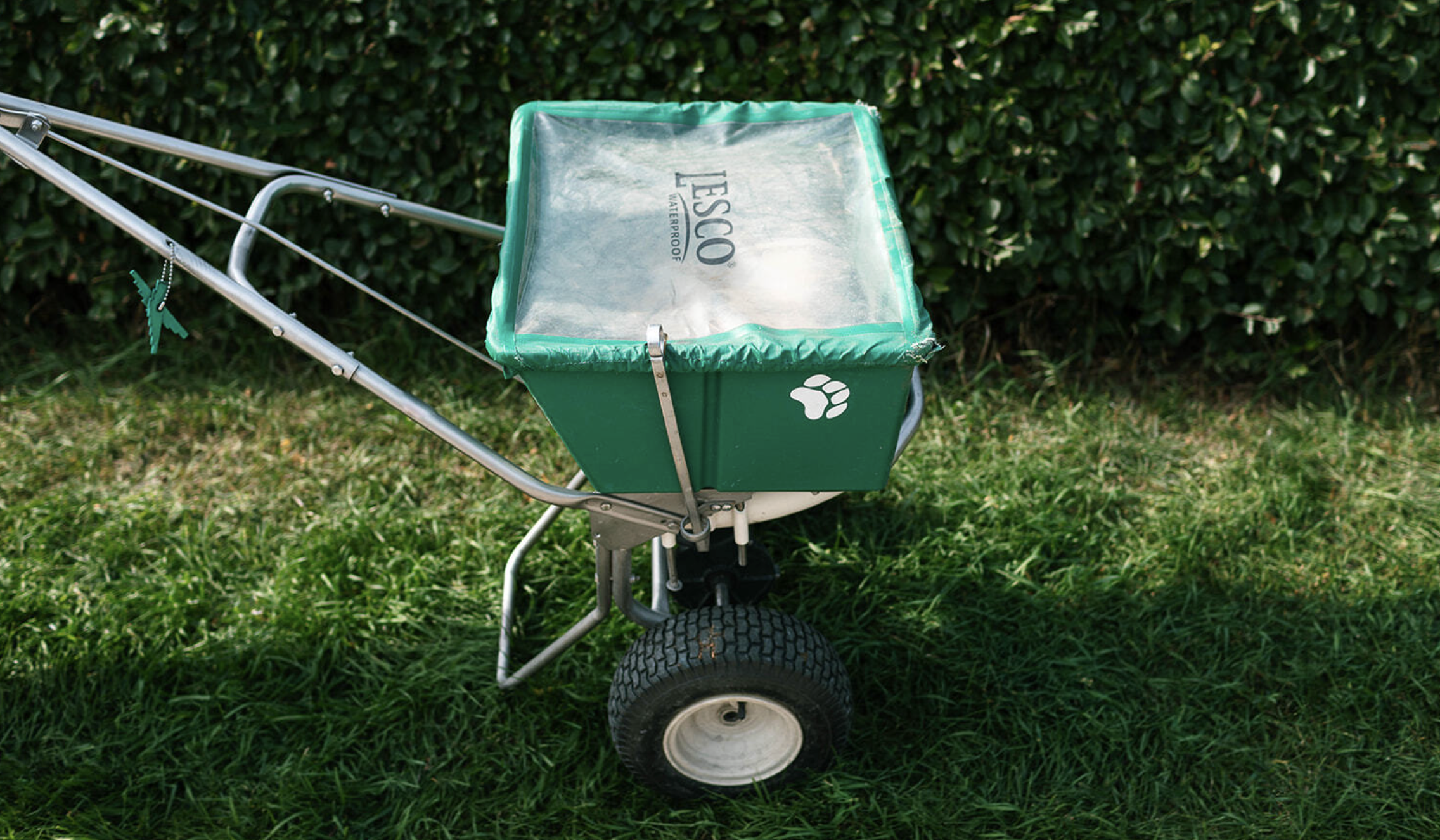Knowing the right time to fertilize your lawn in Edmonton is key to maintaining its health and vibrancy. The harsh winters and short growing seasons require careful timing to ensure your grass gets the nutrients it needs to thrive.
In this article, we’ll overview everything you need to know about fertilizing your lawn in Edmonton. So, let’s dive into it.

When to Fertilize Your Lawn in Edmonton
Fertilizing your lawn at the right time is crucial to ensuring it stays lush and healthy in Edmonton’s challenging climate.
The timing of fertilizer application can significantly affect how well your lawn thrives throughout the year. In this section, we’ll discuss the best times to fertilize your lawn in Edmonton, focusing on summer, spring, and fall fertilization.
The key is to remember that fertilization in each season has its upsides and downsides. Moreover, understanding when the best fertilization time for your grass requires an assessment of your lawn’s current state and type of grass. Thus, we advise you to contact lawn care experts.
Summer Fertilization
Summer fertilization refers to applying a balanced fertilizer during the warmer months when your grass is actively growing.
Summer fertilization supports the lawn’s health during the peak growing season. It helps to maintain vibrant, green grass, even during the summer heat.
The added nutrients encourage the lawn to grow thick and strong, enhancing its ability to withstand the stress of high temperatures, drought, and heavy foot traffic. By providing a nutrient boost during this critical time, summer fertilization can help your lawn recover from any wear and tear.
The main upsides and downsides of summer fertilization include the following.
Upsides
- Promotes lush, green grass.
- Improves lawn health during high-temperature months.
- Provides nutrients to support recovery from wear and tear.
Downsides
- Risk of fertilizer burning if applied in extreme heat.
- It can encourage weed growth if not properly balanced.
- It may not be necessary if the lawn is well-established and healthy.
Fall Fertilization
Fall fertilization is the process of applying fertilizer to your lawn during the cooler months, typically after the growing season has slowed down.
Fall fertilization is crucial for preparing your lawn for the cold winter months. It encourages the grass to store nutrients that will help it survive the winter dormancy and promote healthier growth in the spring.
The cooler temperatures of fall help the fertilizer absorb more effectively into the soil, stimulating deeper root growth and strengthening the lawn for the upcoming year. By fertilizing in the fall, you ensure your lawn is ready to thrive once warmer weather returns.
Overall, there are certain upsides and downsides for fall fertilization.
Upsides
- Prepares the lawn for the winter months, ensuring it’s well-nourished for the spring.
- Improves overall soil health and grass resilience.
- Helps retain moisture in the soil during winter.
Downsides
- It can be ineffective if the lawn is too stressed from the season.
- Fertilizer needs to be chosen carefully to avoid encouraging disease or excessive growth.
Spring Fertilization
Spring fertilization involves applying nutrients early in the growing season to help the lawn recover from winter dormancy and prepare for the months ahead.
Spring fertilization jumpstarts your lawn’s growth after the harsh Edmonton winter. It replenishes essential nutrients lost during dormancy, helping grass green up quickly and grow thick and strong.
A well-timed spring fertilizer application strengthens roots, making the lawn more resilient to foot traffic, weeds, and potential drought conditions later in the year. Proper fertilization in spring sets the foundation for a healthy, lush lawn throughout the season.
Upsides
- Promotes rapid green-up and strong early growth.
- Helps repair damage from winter stress.
- Strengthens root development for long-term lawn health.
Downsides
- Applying too early can encourage weak, fast growth that’s vulnerable to late frosts.
- Over-fertilizing can lead to excessive top growth at the expense of root development.
- It may increase weed growth if not paired with proper weed control.
Best Lawn Fertilization Practices
Proper fertilization is key to maintaining a healthy lawn, whether you decide to do it in spring, summer, or fall. So, let’s also briefly overview the best lawn fertilization practices.
Choose the Right Fertilizer
Selecting the right fertilizer depends on your lawn’s needs and the season. Look for a balanced mix of nitrogen, phosphorus, and potassium, or choose a slow-release formula for steady nutrient absorption. A soil test can help determine which nutrients your lawn requires most.
Apply at the Right Time
Timing is crucial for effective fertilization. Spring, summer, and fall applications each serve different purposes, so plan accordingly based on your lawn’s growth cycle. Avoid fertilizing during extreme heat or right before heavy rainfall to prevent nutrient loss.
Use Proper Application Techniques
Even distribution is essential for consistent growth. Use a broadcast or drop spreader to apply fertilizer evenly, following the recommended application rates. Watering lightly after fertilizing helps nutrients penetrate the soil, but avoid overwatering, which can wash fertilizer away. However, it is always best to contact professionals to ensure quality fertilization.
Avoid Over-Fertilizing
Applying too much fertilizer can harm your lawn, leading to excessive growth, weak roots, and increased susceptibility to pests and diseases. Stick to the recommended schedule and amounts, and opt for slow-release fertilizers to prevent sudden nutrient surges.
Improve Your Lawn’s Health with Yard Dawgs
Fertilizing your lawn at the right time is essential for keeping it healthy and vibrant throughout Edmonton’s challenging climate. If you are on the lookout for expert lawn care services, then you are in the right place.
For professional lawn care services and expert advice in Edmonton, visit Yard Dawgs Lawn Care. Let the experts handle the work for a lawn that’s sure to impress!


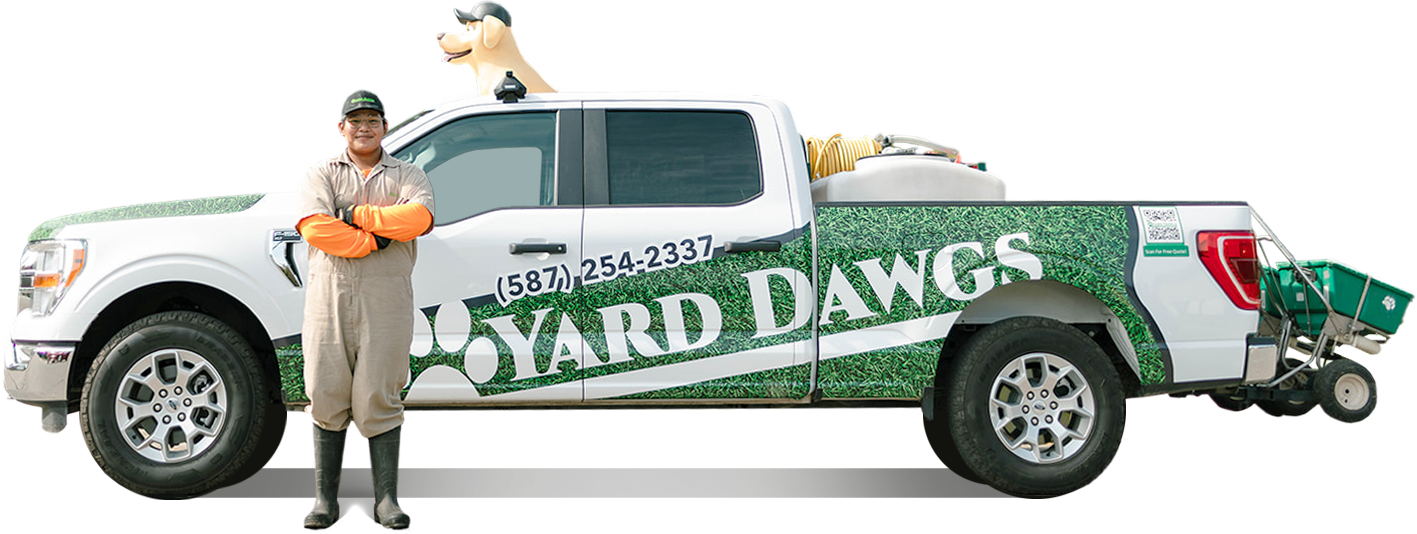


.png)
